Volume 1 | Number 1 | May 2009
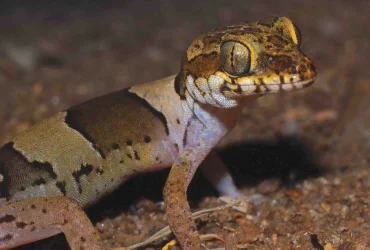 v1i1.12
v1i1.12ISSN: 1800-427X (print)
eISSN: 1800-427X (online)
DOI:10.47605/tapro.v1i1.12
Submitted date: 08 January 2009
Accepted date: 11 January 2009
Published date: 06 April 2009
Pp. 66–73.
SOCIAL BEHAVIOURS OF CAPTIVE Trachypithecus cristatus (MAMMALIA: CERCOPITHECIDAE) IN THE NATIONAL ZOOLOGICAL GARDENS OF SRI LANKA
A.A. Thasun Amarasinghe*, W. Madhava S. Botejue & Lee E. Harding
*Corresponding author. E-mail: thasun.taprobanica@gmail.com
Abstract
Trachypithecus cristatus (Silvered Leaf Monkey or Silvered Lutung) occur on the Malay Peninsula, Sumatra, Borneo and nearby islands and live mainly in uni-male, female-bonded groups. This study presents preliminary data on social behaviours for Silvered Leaf Monkey in captivity. Behavioural observations were conducted on one group (one adult male, four adult females, three juvenile males and four juvenile females). Data were collected on 30 of the 60 calendar days at the National Zoological Gardens, Dehiwala, Sri Lanka. All behaviours including agonistic and dominance-related, locomotion, feeding and infant-related behaviours were included in the analysis. Unlike in wild populations, we found a clear dominance hierarchy among females.
Key words : captive behaviour, dominance, hierarchy, langur, Sri Lanka, Trachypithecus cristatus
eISSN: 1800-427X (online)
DOI:10.47605/tapro.v1i1.12
Submitted date: 08 January 2009
Accepted date: 11 January 2009
Published date: 06 April 2009
Pp. 66–73.
SOCIAL BEHAVIOURS OF CAPTIVE Trachypithecus cristatus (MAMMALIA: CERCOPITHECIDAE) IN THE NATIONAL ZOOLOGICAL GARDENS OF SRI LANKA
A.A. Thasun Amarasinghe*, W. Madhava S. Botejue & Lee E. Harding
*Corresponding author. E-mail: thasun.taprobanica@gmail.com
Abstract
Trachypithecus cristatus (Silvered Leaf Monkey or Silvered Lutung) occur on the Malay Peninsula, Sumatra, Borneo and nearby islands and live mainly in uni-male, female-bonded groups. This study presents preliminary data on social behaviours for Silvered Leaf Monkey in captivity. Behavioural observations were conducted on one group (one adult male, four adult females, three juvenile males and four juvenile females). Data were collected on 30 of the 60 calendar days at the National Zoological Gardens, Dehiwala, Sri Lanka. All behaviours including agonistic and dominance-related, locomotion, feeding and infant-related behaviours were included in the analysis. Unlike in wild populations, we found a clear dominance hierarchy among females.
Key words : captive behaviour, dominance, hierarchy, langur, Sri Lanka, Trachypithecus cristatus
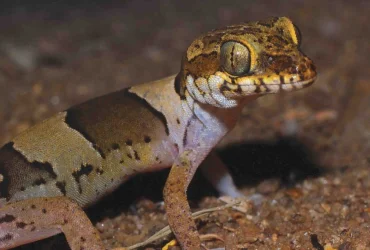 v1i1.11
v1i1.11ISSN: 1800-427X (print)
eISSN: 1800-427X (online)
DOI:10.47605/tapro.v1i1.11
Submitted date: 03 January 2009
Accepted date: 05 January 2009
Published date: 06 April 2009
Pp. 63–65
NOTES ON EX-SITU INCUBATION AND HATCHLINGS OF Eutropis carinata (SCHNEIDER, 1801) (REPTILIA : SCINCIDAE) FROM SRI LANKA
Thilina P. Walikanna & D.M.S. Suranjan Karunarathna*
*Corresponding author. E-mail: dmsameera@gmail.com
Eutropis carinata is widely distributed skink in Sri Lanka. This observation describes ex-situ incubation and hatching of this species at Colombo district in Sri Lanka. In total, 25 eggs with two adults of E. carinata were located from a termite mound while some villagers where trying to kill a cobra (Naja naja) living in the mound. Of these skink eggs, 20 were successfully incubated. The incubation period was 30 days from the date eggs were collected. The average incubation temperature varied from 26–28°C. Mean egg length was 15.6 mm and mean egg width 10.4 mm. Mean hatchling SVL was 28.5 mm and mean TL is 41.3 mm. The mean weight of hatchlings was ~3 g and the mean total length is 69.8 mm. After about five days, hatchlings were released at the original place of the clutch.
eISSN: 1800-427X (online)
DOI:10.47605/tapro.v1i1.11
Submitted date: 03 January 2009
Accepted date: 05 January 2009
Published date: 06 April 2009
Pp. 63–65
NOTES ON EX-SITU INCUBATION AND HATCHLINGS OF Eutropis carinata (SCHNEIDER, 1801) (REPTILIA : SCINCIDAE) FROM SRI LANKA
Thilina P. Walikanna & D.M.S. Suranjan Karunarathna*
*Corresponding author. E-mail: dmsameera@gmail.com
Eutropis carinata is widely distributed skink in Sri Lanka. This observation describes ex-situ incubation and hatching of this species at Colombo district in Sri Lanka. In total, 25 eggs with two adults of E. carinata were located from a termite mound while some villagers where trying to kill a cobra (Naja naja) living in the mound. Of these skink eggs, 20 were successfully incubated. The incubation period was 30 days from the date eggs were collected. The average incubation temperature varied from 26–28°C. Mean egg length was 15.6 mm and mean egg width 10.4 mm. Mean hatchling SVL was 28.5 mm and mean TL is 41.3 mm. The mean weight of hatchlings was ~3 g and the mean total length is 69.8 mm. After about five days, hatchlings were released at the original place of the clutch.
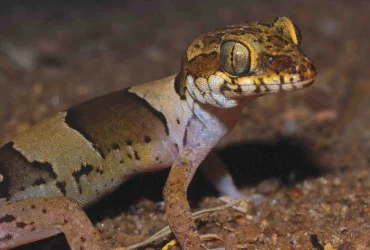 v1i1.10
v1i1.10ISSN: 1800-427X (print)
eISSN: 1800-427X (online)
DOI:10.47605/tapro.v1i1.10
Submitted date: 20 February 2009
Accepted date: 26 February 2009
Published date: 06 April 2009
Pp. 55–62, pls. 10–17.
THE WILD BUFFALO OF SRI LANKA
Colin Groves* & Jayantha Jayawardene
*Corresponding author. E-mail: colin.groves@anu.edu.au
Abstract
Buffaloes live wild in many areas in Sri Lanka, but it is controversial whether any of them are genuinely wild, or whether they are all feral. We investigated this question by observation of living buffaloes in Yala National Park, and measurement of available cranial material. We conclude that there is indeed an indigenous wild buffalo in Sri Lanka. Steps should be taken to ensure its genetic integrity.
Key words : Bubalus arnee migona, buffalo, cranial capacity, Sri Lanka, Yala
eISSN: 1800-427X (online)
DOI:10.47605/tapro.v1i1.10
Submitted date: 20 February 2009
Accepted date: 26 February 2009
Published date: 06 April 2009
Pp. 55–62, pls. 10–17.
THE WILD BUFFALO OF SRI LANKA
Colin Groves* & Jayantha Jayawardene
*Corresponding author. E-mail: colin.groves@anu.edu.au
Abstract
Buffaloes live wild in many areas in Sri Lanka, but it is controversial whether any of them are genuinely wild, or whether they are all feral. We investigated this question by observation of living buffaloes in Yala National Park, and measurement of available cranial material. We conclude that there is indeed an indigenous wild buffalo in Sri Lanka. Steps should be taken to ensure its genetic integrity.
Key words : Bubalus arnee migona, buffalo, cranial capacity, Sri Lanka, Yala
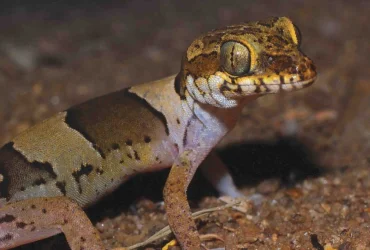 v1i1.9
v1i1.9ISSN: 1800-427X (print)
eISSN: 1800-427X (online)
DOI:10.47605/tapro.v1i1.9
Submitted date: 12 November 2008
Accepted date: 15 January 2009
Published date: 06 April 2009
Pp. 43–54, pls. 7–9.
AN OVERVIEW OF SRI LANKAN SEA SNAKES WITH AN ANNOTATED CHECKLIST AND A FIELD KEY
Ruchira Somaweera* & Nilusha Somaweera
*Corresponding author. E-mail: ruchira.somaweera@gmail.com
Abstract
Sea snakes of Sri Lanka has not received much attention and the last few decades did not see any unprecedented increase in interest in these largely ignored (in Sri Lanka) snakes, despite heavy attention has been made on certain other groups of herpetofauna. Hence, a new checklist and an overview in ‘general literature’ are much needed. This contribution provides an enumeration of the recorded species, together with an overview of the natural history of the group and a set of field keys for species found in Sri Lankan waters.
Key words : distribution, identification key, natural history, sea kraits, sea snakes, Sri Lanka
eISSN: 1800-427X (online)
DOI:10.47605/tapro.v1i1.9
Submitted date: 12 November 2008
Accepted date: 15 January 2009
Published date: 06 April 2009
Pp. 43–54, pls. 7–9.
AN OVERVIEW OF SRI LANKAN SEA SNAKES WITH AN ANNOTATED CHECKLIST AND A FIELD KEY
Ruchira Somaweera* & Nilusha Somaweera
*Corresponding author. E-mail: ruchira.somaweera@gmail.com
Abstract
Sea snakes of Sri Lanka has not received much attention and the last few decades did not see any unprecedented increase in interest in these largely ignored (in Sri Lanka) snakes, despite heavy attention has been made on certain other groups of herpetofauna. Hence, a new checklist and an overview in ‘general literature’ are much needed. This contribution provides an enumeration of the recorded species, together with an overview of the natural history of the group and a set of field keys for species found in Sri Lankan waters.
Key words : distribution, identification key, natural history, sea kraits, sea snakes, Sri Lanka
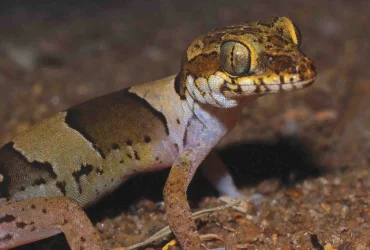 v1i1.8
v1i1.8ISSN: 1800-427X (print)
eISSN: 1800-427X (online)
DOI:10.47605/tapro.v1i1.8
Submitted date: 12 January 2009
Accepted date: 15 January 2009
Published date: 06 April 2009
Pp. 39–42
AN UNUSUAL MISLEAD COMMUNICATION BEHAVIOUR OF Duttaphrynus melanostictus (SCHNEIDER, 1799) (AMPHIBIA : BUFONIDAE) AND Polypedates cruciger BLYTH, 1852 (AMPHIBIA: RHACOPHORIDAE) AT A HUMAN HABITATION IN SRI LANKA
W. Gayan M. Edirisinghe & A.A. Thasun Amarasinghe*
*Corresponding author. E-mail: thasun.taprobanica@gmail.com
Duttaphrynus melanostictus and Polypedatus cruciger are common amphibians in Sri Lanka, being sympatric in many habitats, while P. cruciger is endemic to the island. This is the first published observation on an unusual mislead communication behavior on D. melanostictus and P. cruciger at a human habitat in Sri Lanka. Considering the field observation, we can assume both D. melanostictus and P. cruciger males may accidentally catch almost immediately without identifying each other properly in their breeding periods. We suggest that these amphibians communicate with their unique call but their eyesight is not developed to identify its partner easily.
eISSN: 1800-427X (online)
DOI:10.47605/tapro.v1i1.8
Submitted date: 12 January 2009
Accepted date: 15 January 2009
Published date: 06 April 2009
Pp. 39–42
AN UNUSUAL MISLEAD COMMUNICATION BEHAVIOUR OF Duttaphrynus melanostictus (SCHNEIDER, 1799) (AMPHIBIA : BUFONIDAE) AND Polypedates cruciger BLYTH, 1852 (AMPHIBIA: RHACOPHORIDAE) AT A HUMAN HABITATION IN SRI LANKA
W. Gayan M. Edirisinghe & A.A. Thasun Amarasinghe*
*Corresponding author. E-mail: thasun.taprobanica@gmail.com
Duttaphrynus melanostictus and Polypedatus cruciger are common amphibians in Sri Lanka, being sympatric in many habitats, while P. cruciger is endemic to the island. This is the first published observation on an unusual mislead communication behavior on D. melanostictus and P. cruciger at a human habitat in Sri Lanka. Considering the field observation, we can assume both D. melanostictus and P. cruciger males may accidentally catch almost immediately without identifying each other properly in their breeding periods. We suggest that these amphibians communicate with their unique call but their eyesight is not developed to identify its partner easily.
Hubungi Kami
The ultimate aim of the journal is to provide an effective medium for communication of the latest and best scientific information.
Copyright © 2020 Taprobanica. All Rights Reserved
Jasa Pembuatan Website by IKT




